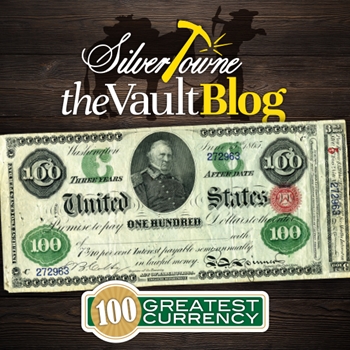
Of all the notes featured in the 100 Greatest American Currency Notes Series from Whitman Publishing, we have a first and only in its class to be included in the list. Authors Q. David Bowers and David M. Sundman will take us through this “interesting” entry from the series.
#91 – Issued With Attached Coupons $100 Interest Bearing Note
Issued under the Act of March 3, 1863, Interest Bearing Notes were issued with one-year, two-year, and three-year maturities. Depicted on the face of the note is the war hero of the War of 1812, General Winfield Scott. The $100 bill was issued with attached coupons that could be cut off and redeemed twice a year. In addition, interest on it was 7.3% per year.
March 3rd,1863, is of significance because it was at the same time Congress passed a resolution to attain the former Clark, Gruber & Co. private mint in Denver. It was also to establish the Carson City Mint. The Act is also looked at as the beginning of Fractional Currency, which was what replaced Postage Currency.
Under multiple authorizations, denominations of Interest Bearing notes from $10 to $5,000 were issued from 1861-1865. According to records, almost all were redeemed once the interest expired. They were issued with one-year, two-year, and three-year maturities. One-year note denominations were as follows: $10, $20, $50, $100, $500, $1,000, and $5,000, with an estimated $38,685 worth outstanding as of January 1, 1885. Two-year notes: $50, $100, $500, and $1,000, with an estimated $30,000 outstanding. Three-year notes: $50, $100, $500, $1,000, and $5,000.
The historic market value for the $100 Interest Bearing Note with Attached Coupons in a Very Fine condition was $3,500 in 1960. As of 2006, it rose to $225,000.







